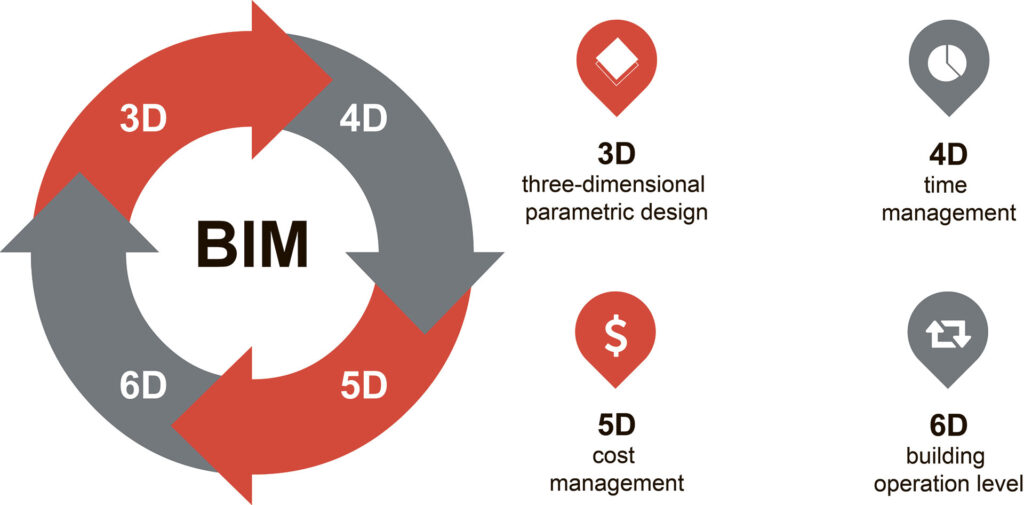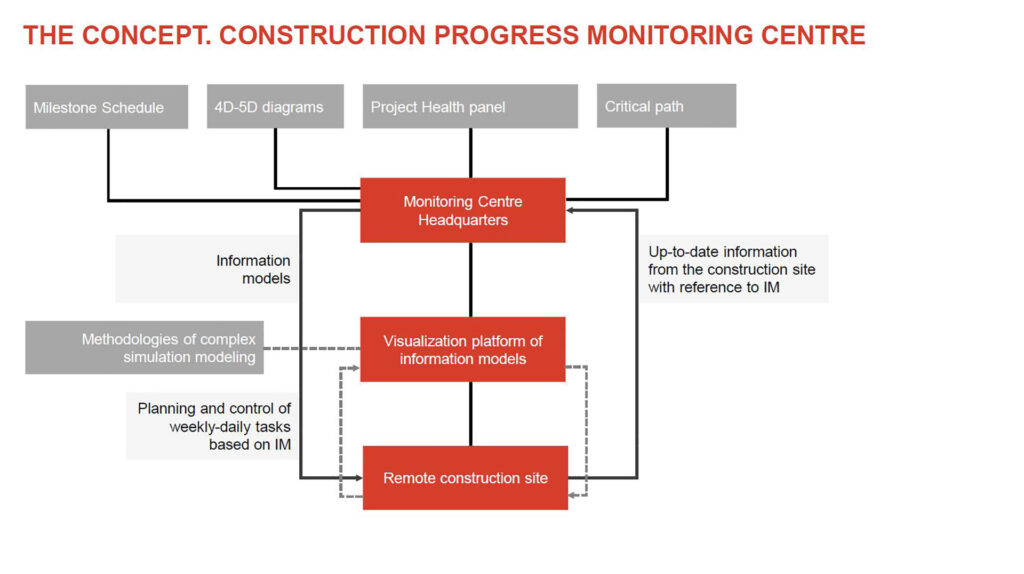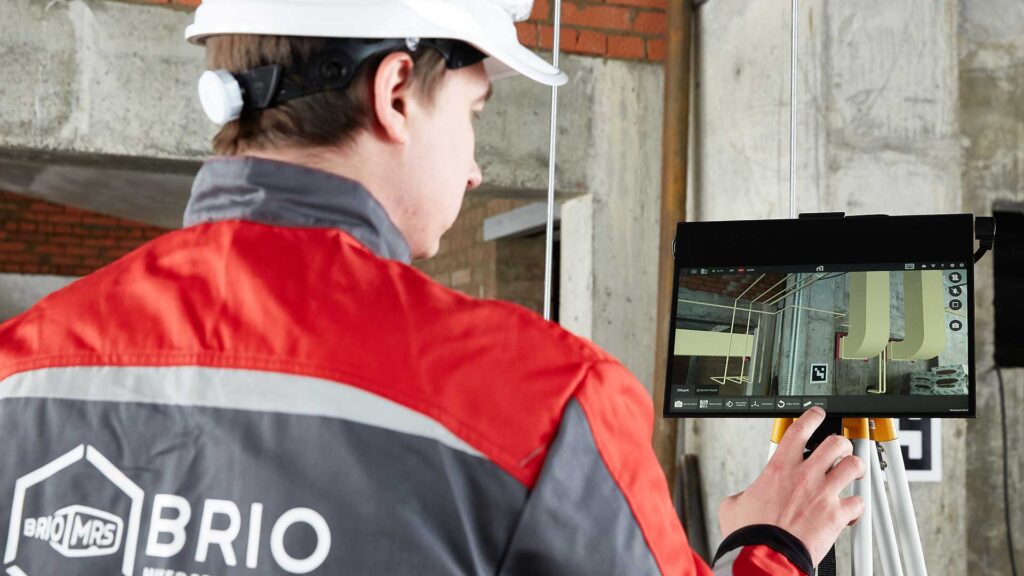Modern {{investment projects}} are a complex, multi-stage, hierarchical value creation process, but at the same time, most projects are over budget and do not meet deadlines.
The main problems of the {{construction industry}} are associated with:
- lack of project management skills;
- ineffective control and communication;
- design collisions and alterations;
- the occurrence of errors in planning;
- delays in MTP deliveries.
These problems arise due to the use of ineffective project planning tools and the human factor associated with operational control and transfer of initial data during project implementation.
{{The solution}} to this problem {{at the stage of work planning}}:
When implementing investment projects, {{the BIM-modeling}} technology proved to be the most effective, which allows eliminating a large number of collisions at the stage of developing documentation.
The information model is usually divided into the following levels levels – 3D, 4D, 5D, 6D.

{{3D}} is a three-dimensional parametric design, the fundamental difference from classical CAD systems is that any line in the drawing should now have properties.
{{4D}} is time management. In today’s realities, when forming an investment object, time is a decisive factor, because the investor pays % for the use of credit money. This factor became especially obvious when escrow accounts were introduced in Russia for the construction of residential buildings.
The use of a 4D information model allows you to visualize the sequence of future work performed more easily and, through the use of lean manufacturing methods, significantly reduce the construction time.
{{5D}} is cost management. When planning the cost of construction, each element of the information model must be linked to the customer’s database for the cost of work and materials, this will allow them to determine the actual cost of construction already at the design stage.
{{6D}} is the building operation level. The BIM model must be integrated with ERP systems.
{{The solution}} to this problem {{at the stage of work planning}}:
At the moment, the information model is not used directly at the construction site, in fact, the designers create a BIM project, but they continue to build using classic paper 2D drawings.
Information about the actually completed scope of work does not correspond to the fact, because they can be mounted, but not accepted, which means that the structures have been installed, but the construction control has comments on quality. They can also be installed, but not handed over, which means that the installation of structures was carried out, which was accepted by the construction control, but there is no executive documentation.
{{Construction Project}} Management Center:

As a source of operational information from the construction site, a specialized BRIO MRS tablet with mixed and advanced mixed reality technology is used, which has proved to be effective when working with complex engineering objects with a large intersection of communications.
This technology allows you to visualize the information model directly at the construction site.

Now the building control engineer just needs to point the tablet at the element to be mounted and compare with what is to be built.
If a violation is revealed, issue an order directly to the element to be installed, and at the end of the working day, issue an order to the contractor.
Using the information model at the construction site, it is possible to get all the information embedded in the model, indicate the current status of the element being mounted and transfer the 3D graph of the object to the manager’s desktop.

{{Benefits}} of the concept:
- There is no need to attract additional personnel to the site;
- The complexity of construction management processes will not increase;
- Balanced work schedule, taking into account the delivery and installation schedule of technological equipment;
- A balanced schedule of the needs of materials, people, machines and mechanisms;
- Adoption of effective operational organizational and technological decisions.
